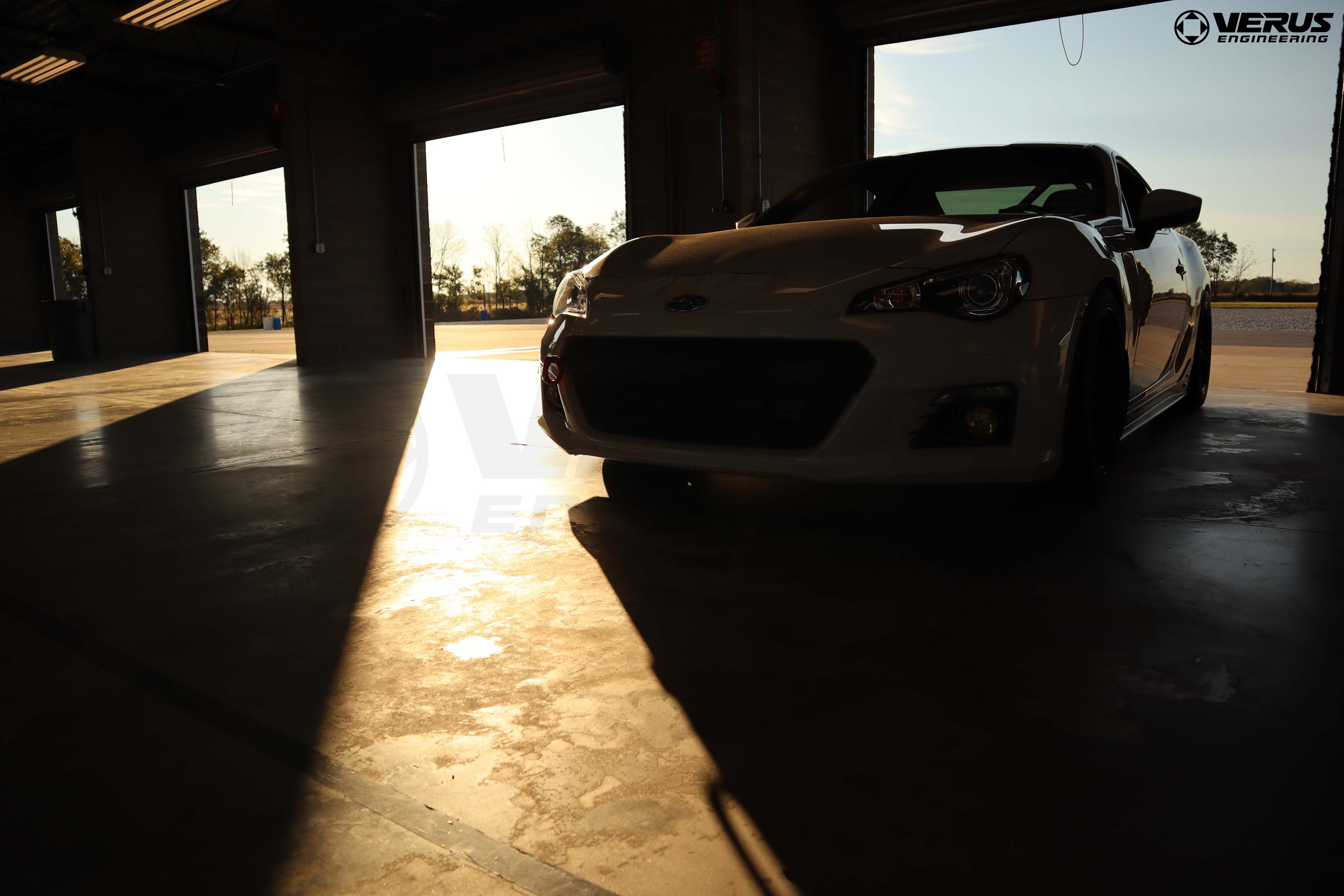
GOALS
The goal of the tests was to quantify track times before and after adding our aerodynamic parts to the car.
There are 2 different drivers; one a professional driver and the other an average track enthusiast.
This was to show how track times change with two different drivers of different skill sets. We also wanted to see how aerodynamic components can impact lap times for two different drivers with different skill sets.
DRIVERS
Dan Clarke - Professional Race Car Driver who has driven in many racing series.
Formula Ford
British Formula 3 Championship
Champ Car
A1GP
Indy Lights
NASCAR
Continental Tire SportCar Challenge
Dan also works as a driving coach at Putnam.
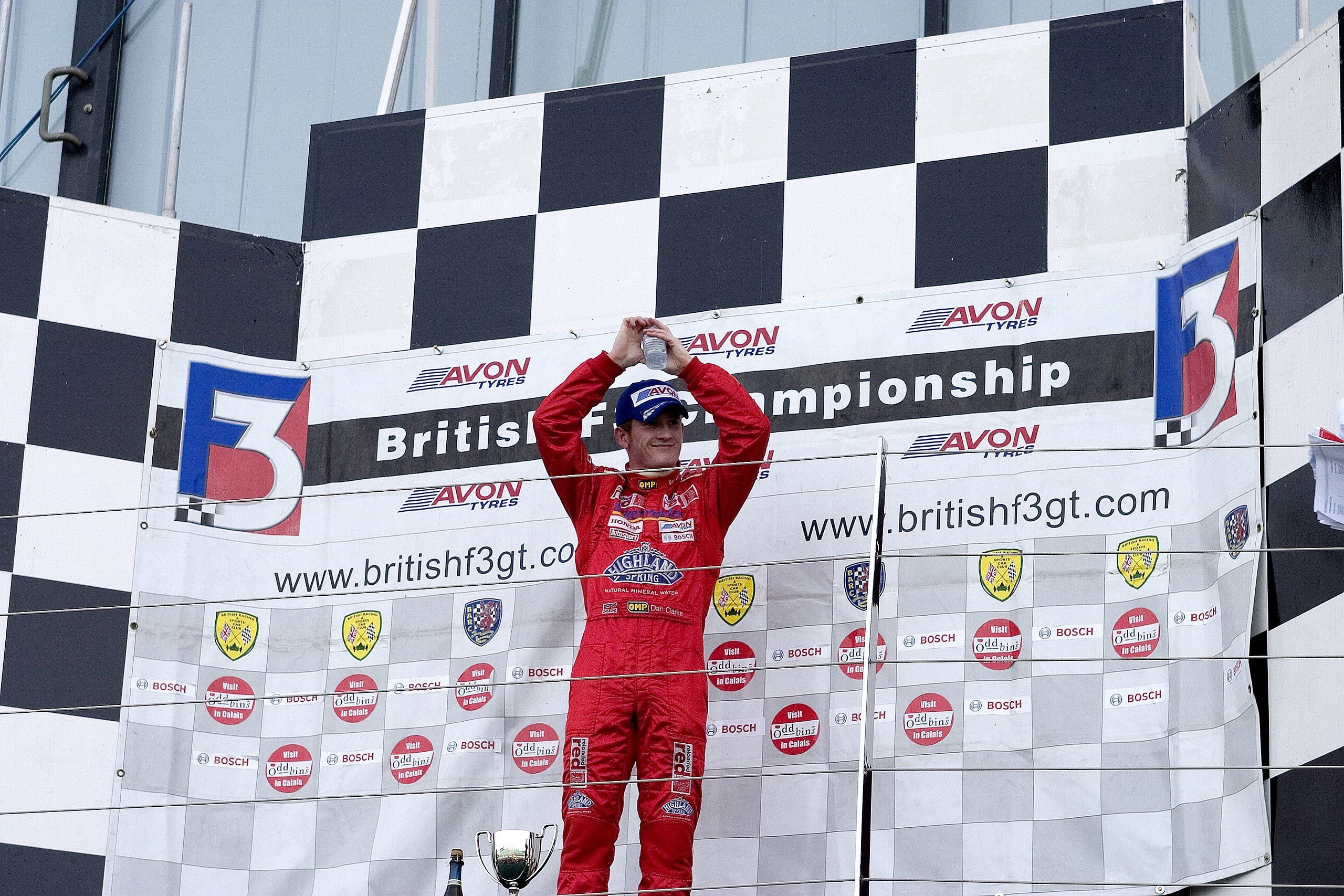
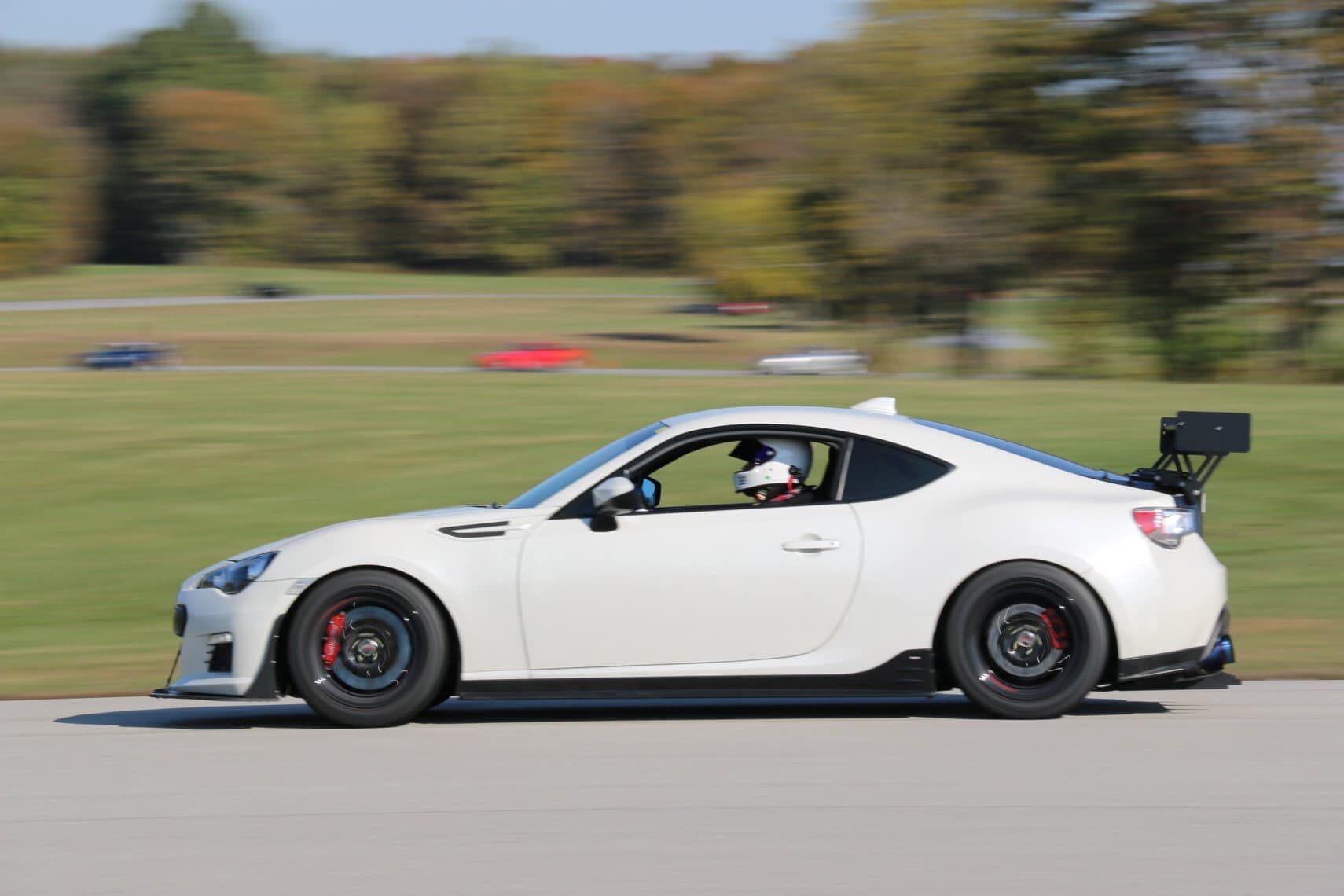
Justin Green - Average track car enthusiast and owner of the test car.
Professional Automotive Painter
Avid Track Enthusiast
Owner of Two Dogs
Loves Working on Cars
Gamer
DAN CLARK NO AERO VS VERUS AERO
Verus Aero Added:
Aggressive Rear Diffuser
Street Front Splitter with Race Upgrade
Splitter Endplates
High-Efficiency Rear Wing
Best Lap WITHOUT Verus Engineering Aero - 1.20.636
Best Lap WITH Verus Engineering Aero (High-Efficiency Rear Wing) - 1.19.386
Lap time improved by 1.25 seconds
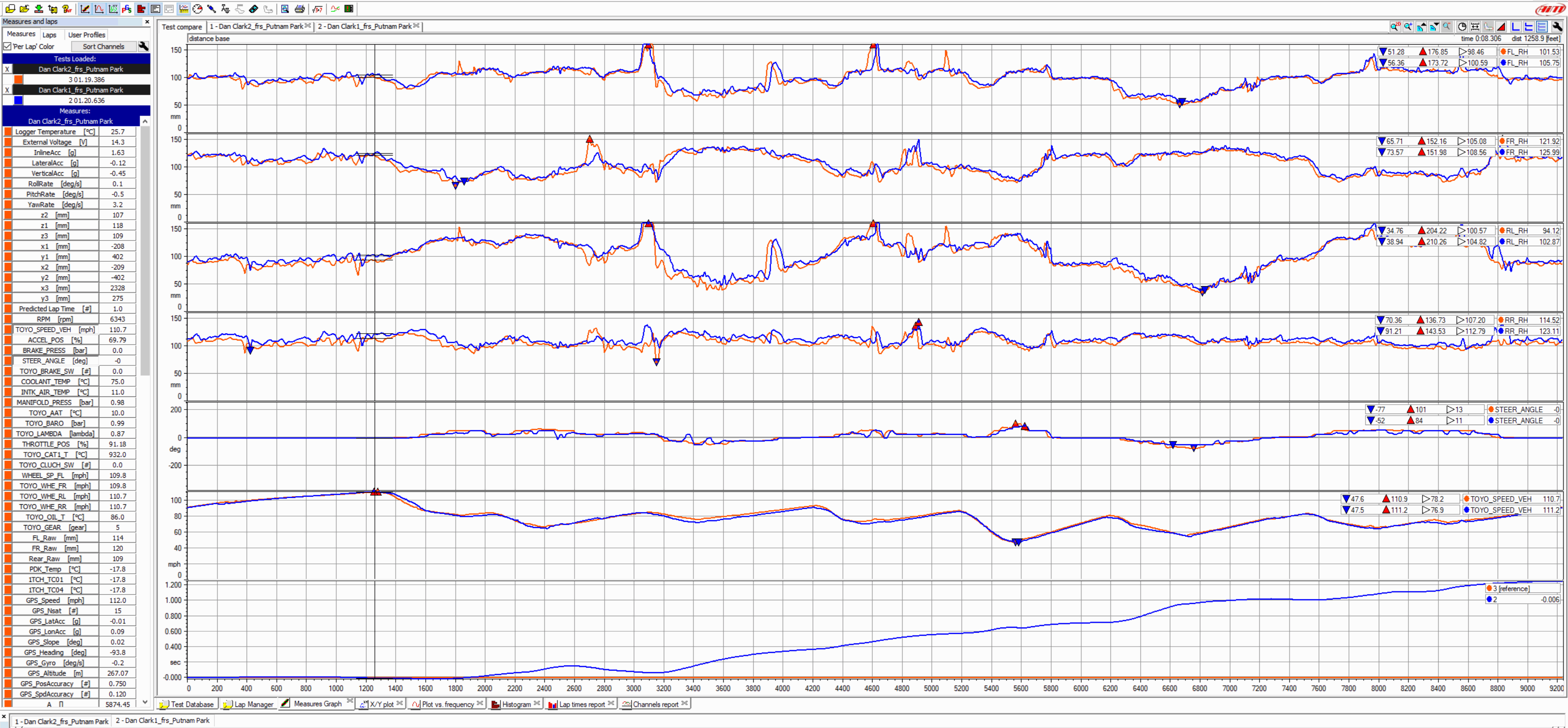
Orange is lap with Verus Aero
Blue is lap without Verus Aero
The car had 3 laser ride height sensors installed where the ride heights at the tire center can be calculated. See our video of how laser ride heights work https://youtu.be/trawn1Ms3sA.
The ride height sensors allow us to write math channels to calculate downforce. The easiest place to calculate downforce would be the straight while the car is still at full throttle, no braking, and no steering input.
At the end of the straight, we are calculating around 380lbs of downforce at 110mph.
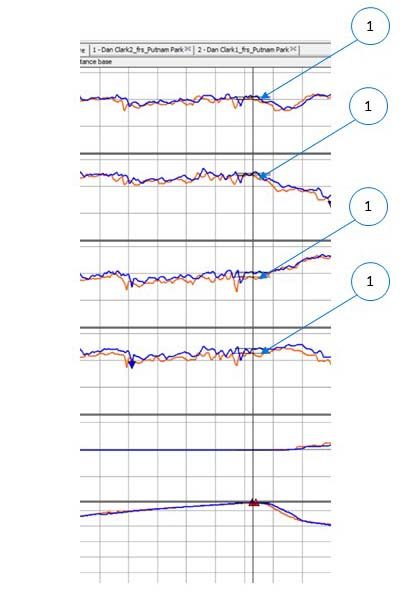
Orange is lap with Verus Aero
Blue is lap without Verus Aero
The ride heights throughout the lap are lower with the Verus Engineering aero. We then calculated average downforce throughout the lap.
The average downforce increase compared to no aero throughout the lap is 230 lbs!
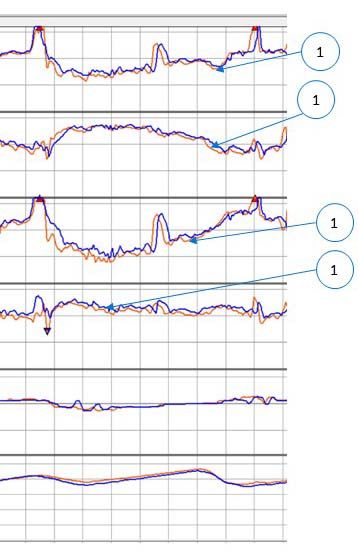
Orange is lap with Verus Aero
Blue is lap without Verus Aero
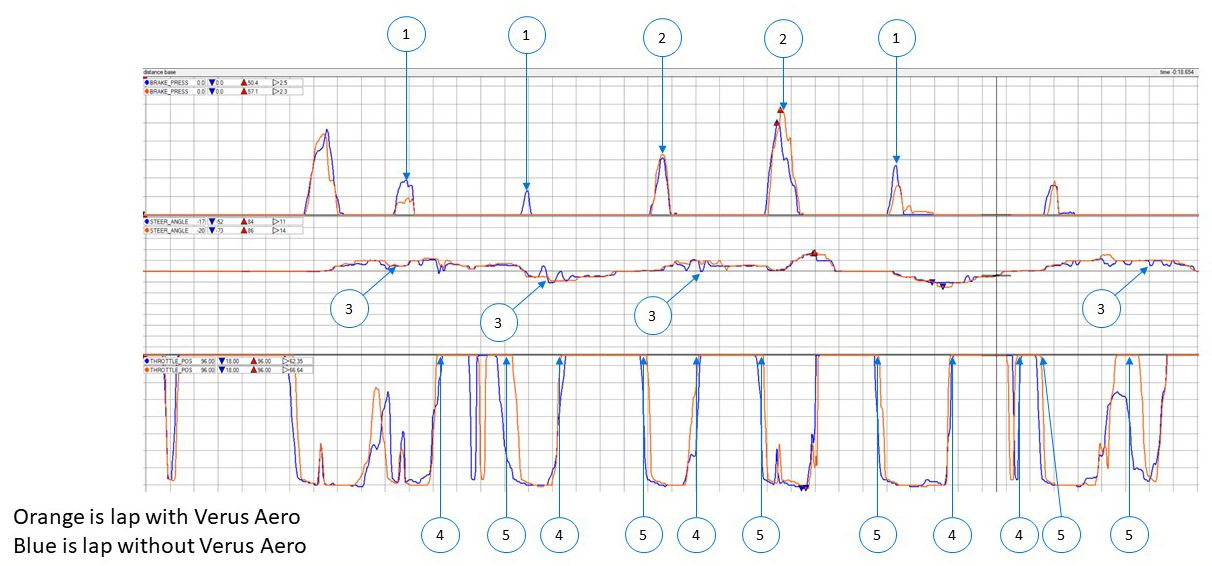
With aero, Dan was able to brake less and carry more speed. In most places, no aero required more braking and more braking pressure. In one specific track location (turn 3 and 4), no braking was required using the aero kit where braking was necessary for no aero.
With aero, two turns had lighter had higher braking pressure, but speed was higher and throttle was on longer with aero, necessitating the need for slightly higher brake pressure.
With aero, Dan's steering input was smoother. From driver feedback, this was because the downforce made the car feel more planted and was easier to drive. The car was less tail happy and required less steering wheel correction throughout the corner.
With aero, Dan was able to get on throttle quicker.
With aero, Dan was able to stay on the throttle longer.
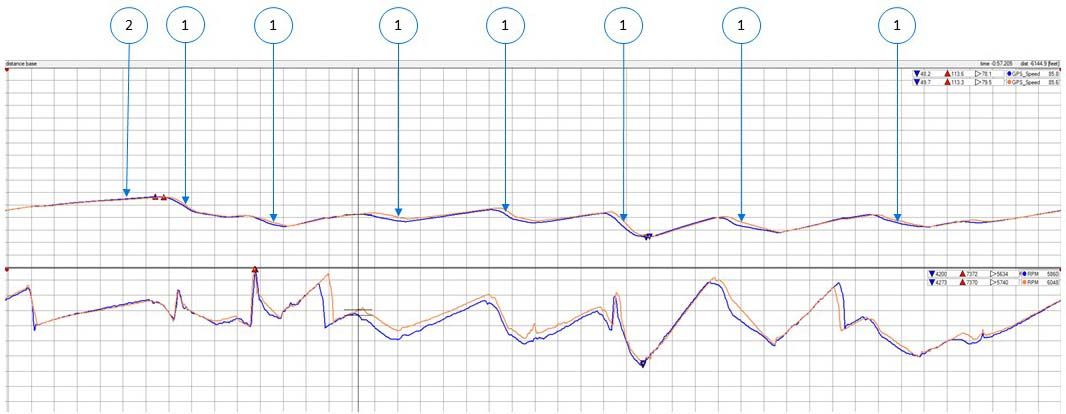
With aero, more speed can be carried throughout the corners.
Speed with aero is lower in the higher speed straight because of the added drag.
Orange is lap with Verus Aero
Blue is lap without Verus Aero
JUSTIN GREEN NO AERO VS VERUS AERO
Verus Aero Added:
Street Front Splitter with Race Upgrade
Splitter Endplates
High-Efficiency Rear Wing
Best Lap WITHOUT Versu Engineering Aero - 1.25.997
Best Lap WITH Verus Engineering Aero (High-Efficiency Rear Wing) - 1.23.090
Lap time improved by 2.907 seconds
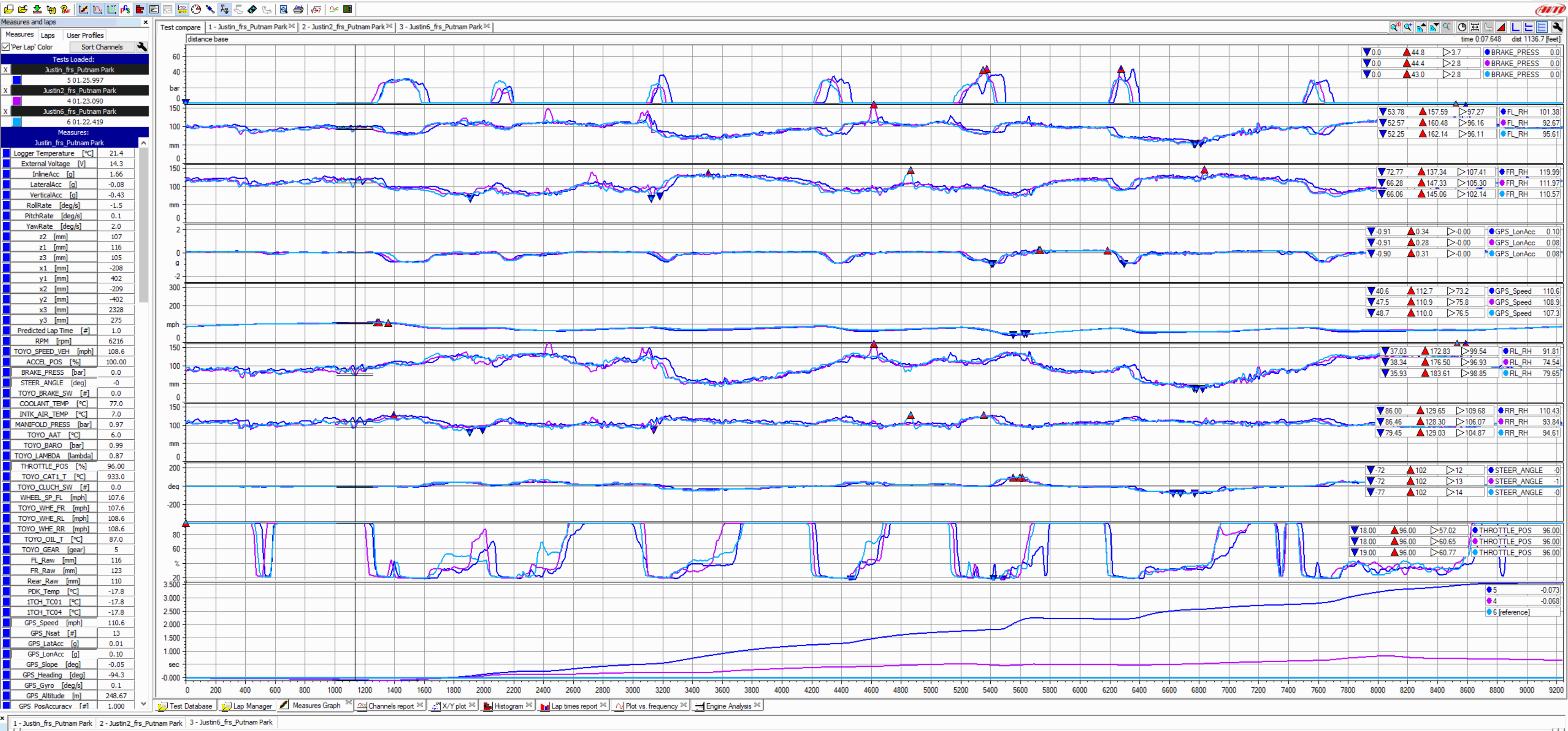
Dark Blue is lap without Verus Aero
Purple is lap with Verus Aero
Light Blue is Verus Aero and swapping High-Efficiency Rear Wing for UCW Rear Wing
The data on the enthusiast driver was much more difficult to decipher. The ride heights were more erratic so I would not trust the numbers as well compared to Dan’s ride height data which was more consistent.
Because of this, I will emit the downforce numbers for this. However, visually the ride heights are lower throughout the long front straight (purple and light blue are lower).
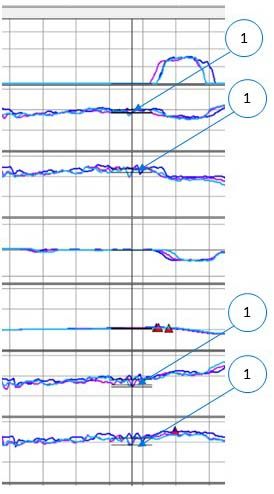
Dark Blue is lap without Verus Aero
Purple is lap with Verus Aero
Light Blue is Verus Aero and swapping High-Efficiency Rear Wing for UCW Rear Wing
The ride heights throughout the lap are lower with the Verus Engineering aero. We then calculated average downforce throughout the lap compared to no aero.
The average downforce throughout the track is 140 lbs. This is lower than Dan which makes sense as Dan carried more speed throughout the track, thus generating more downforce.
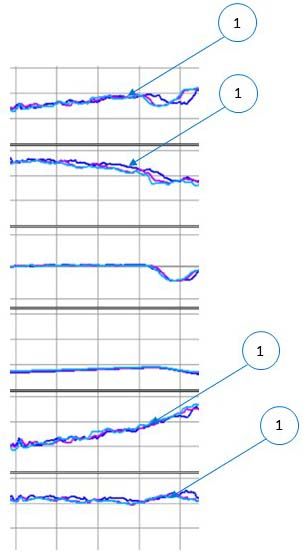
Dark Blue is lap without Verus Aero
Purple is lap with Verus Aero
Light Blue is Verus Aero and swapping High-Efficiency Rear Wing for UCW Rear Wing
CONCLUSION
Ultimately Dan preferred our High-Efficiency Rear Wing compared to the other wings we tested. It also resulted in the fastest time around the track. The reduced drag and high efficiency of the rear wing compared to the other units tested proved to be the best setup for this specific front aero package and Dan’s driving style.
Justin preferred substantially more rear downforce and was more confident with our UCW rear wing. Justin was able to reduce his lap times further with the UCW than with the High-Efficiency Rear Wing due to his driving style and the increased confidence the UCW unit offers him. Justin reduced his lap times by an *additional* 0.671 seconds with the UCW off the setup with the High-Efficiency Rear Wing.
Track Testing FRS/BRZ/GT86 Aero with Verus Engineering